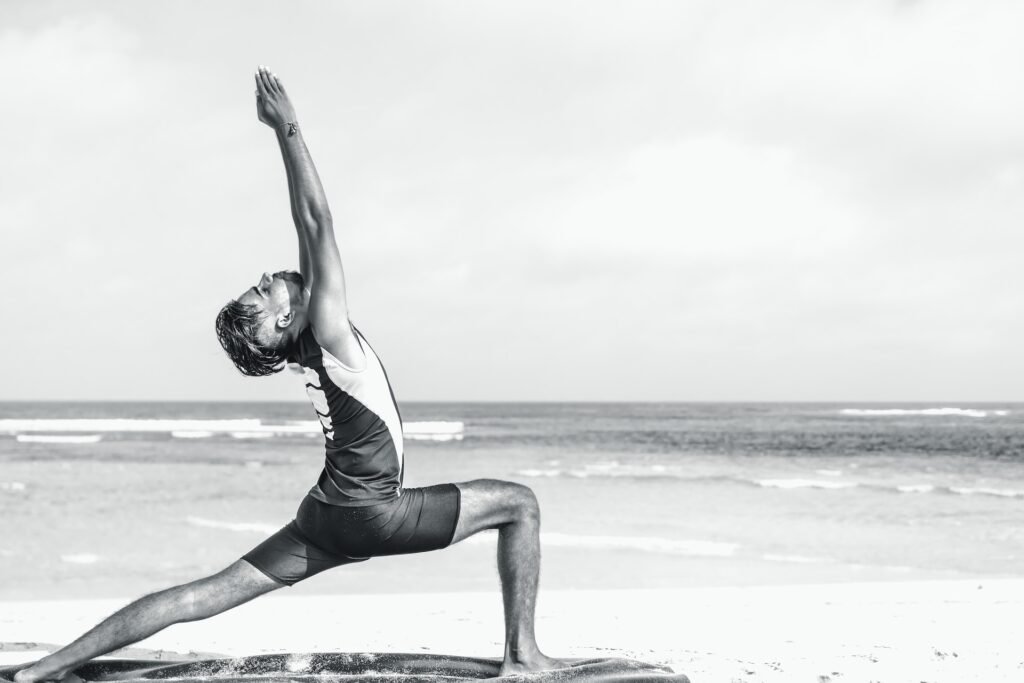In the dynamic realm of fitness, flexibility training emerges as a fundamental yet often underestimated component that holds the key to unlocking a myriad of health benefits. Beyond the common perception of achieving contortionist feats, flexibility training involves a sophisticated interplay of science, principles, and practical dos and don’ts. This comprehensive exploration delves into the essence of flexibility, unraveling the science behind its efficacy, dissecting the essential principles and formulas that govern its success, and providing a holistic guide to incorporating and measuring flexibility gains. From the basic tenets to advanced techniques, this journey aims to demystify flexibility training, making it not just an exercise routine but an indispensable aspect of overall well-being. So, buckle up as we embark on a journey to understand, embrace, and harness the transformative power of flexibility training for a healthier, more agile, and resilient you.
| Topic | Description | Tips |
|---|---|---|
| Flexibility Training Importance | Understand why flexibility training is crucial for overall health, athletic performance, and injury prevention. | – Start slow and gradually increase intensity. |
| – Consistency is key; make flexibility training a regular part of your routine. | ||
| Basics of Flexibility Training | Explore the definition, components, and principles of flexibility training, including static and dynamic stretching. | – Learn proper stretching techniques to avoid injuries. |
| – Combine static and dynamic stretches for a comprehensive approach. | ||
| Benefits Beyond Stretching | Uncover the multifaceted advantages of flexibility training, such as improved joint health, enhanced circulation, and stress reduction. | – Incorporate flexibility exercises into stress-relief routines. |
| – Embrace the mind-body connection by focusing on breathing during stretches. | ||
| Getting Started with Flexibility Training | Practical tips for beginners, including starting gradually, dedicating specific days to flexibility workouts, and staying consistent. | – Warm up before stretching to prepare muscles. |
| – Use beginner-friendly stretches like neck tilts and shoulder rolls. | ||
| Science Behind Flexibility | Delve into the scientific principles and formulas governing flexibility gains, including plasticity, sarcomeres, and neuromuscular adaptations. | – Understand the role of proprioceptors in neuromuscular control. |
| – Balance frequency, duration, and intensity for effective flexibility training. | ||
| Dos and Don’ts of Flexibility | A comprehensive guide outlining essential dos and common pitfalls to avoid in flexibility training. | – Do warm up before stretching; don’t skip this crucial step. |
| – Hold each stretch for 15-30 seconds; avoid bouncing movements. | ||
| Stretching Techniques | Explore different stretching techniques, including static, dynamic, PNF, and ballistic stretching. | – Use dynamic stretching as a warm-up before workouts. |
| – Incorporate PNF stretching for advanced gains with a partner. | ||
| Calculating Flexibility Gains | Learn methods for measuring progress, such as range of motion assessments, sit-and-reach tests, and flexibility apps/tools. | – Set realistic goals for tracking and motivation. |
| – Use technology, like flexibility apps, for guided routines and progress visualization. | ||
| Conclusion: Embrace Flexibility | A summary encouraging readers to embrace flexibility training for a healthier, more agile lifestyle. | – Celebrate progress and enjoy the overall well-being that flexibility training brings. |
- Understanding the Importance of Flexibility Training
- The Basics: What is Flexibility Training?
- Benefits Beyond Stretching: Flexibility Training Unveiled
- Getting Started: Incorporating Flexibility Training into Your Routine
- The Science Behind Flexibility: Key Principles and Formulas
- Dos and Don'ts of Flexibility Training: A Comprehensive Guide
- Stretching Techniques: From Static to Dynamic
- Calculating Flexibility Gains: Measuring Your Progress
- Final Thoughts:
- FAQs:
Understanding the Importance of Flexibility Training
Flexibility training, often overshadowed in the realm of fitness, holds a crucial role in maintaining overall health. This section explores why flexibility matters and the myriad benefits it offers beyond the obvious.
1. Improved Range of Motion
Flexibility training enhances the range of motion in joints and muscles. This not only promotes better athletic performance but also contributes to daily activities, from bending to tie your shoes to reaching items on a high shelf.
2. Muscle Tension Reduction
Regular flexibility exercises help alleviate muscle tension. The stretches target tight spots, releasing knots and promoting a more relaxed musculature. This, in turn, can reduce discomfort and contribute to an overall sense of well-being.
3. Posture Enhancement
Good posture is integral to overall health. Flexibility training plays a significant role in improving posture by addressing muscle imbalances and promoting alignment. This is essential for preventing issues like back pain and maintaining a healthy spine.
4. Injury Prevention
One of the lesser-known benefits is the role flexibility plays in injury prevention. Increased flexibility ensures that muscles and joints can move freely, reducing the risk of strains, sprains, and other injuries during physical activities.
The Basics: What is Flexibility Training?
Before delving into the intricacies, let’s establish a fundamental understanding of flexibility training. This section breaks down the basic principles and concepts that form the foundation of flexibility exercises.
1. Definition and Components
Flexibility training involves a series of exercises and stretches designed to improve the ability of muscles and joints to move through their full range. It encompasses both static and dynamic stretching techniques.
2. Static Stretching
Static stretching involves holding a stretch for an extended period, typically 15-30 seconds. This helps elongate muscles and improve flexibility over time. It is often recommended post-workout.
3. Dynamic Stretching
Dynamic stretching incorporates controlled movements through a full range of motion. It is beneficial as a warm-up before physical activities, enhancing blood flow and preparing muscles for action.
4. Plasticity and Adaptability
The science behind flexibility training lies in the plasticity of connective tissues. Regular stretching induces microscopic changes, making muscles and tendons more adaptable and elastic over time.
Benefits Beyond Stretching: Flexibility Training Unveiled
Beyond the conventional idea of stretching, flexibility training unfolds a plethora of benefits. This section delves into the multifaceted advantages that extend far beyond achieving the splits or touching your toes.
1. Joint Health
Improved flexibility contributes to better joint health. By promoting the optimal range of motion, flexibility exercises ensure joints can move freely, reducing the risk of stiffness and discomfort.
2. Enhanced Circulation
Flexibility training enhances blood flow to muscles, improving overall circulation. This not only aids in muscle recovery after workouts but also contributes to better cardiovascular health.
3. Stress Reduction
The mind-body connection is evident in flexibility training. Engaging in stretching exercises promotes relaxation, reducing stress and tension. This dual benefit makes flexibility training a valuable component of holistic well-being.
4. Muscle Balance
Flexibility exercises play a crucial role in achieving muscle balance. By addressing imbalances between opposing muscle groups, flexibility training ensures a harmonious interplay of muscles, preventing injuries caused by muscle asymmetry.
Getting Started: Incorporating Flexibility Training into Your Routine
Now that we’ve established the importance and benefits of flexibility training, let’s explore practical steps for incorporating it into your regular workout routine.
1. Start Gradually
If you’re new to flexibility training, start with basic stretches. Begin with a few minutes at the end of your workout, focusing on major muscle groups like hamstrings, quadriceps, and shoulders.
2. Dedicated Flexibility Sessions
As you become more comfortable, consider dedicating specific days to flexibility workouts. This allows for a more comprehensive and focused approach, ensuring all muscle groups receive attention.
3. Consistency is Key
Consistency is paramount in flexibility training. Aim for regular sessions rather than sporadic intense stretches. This gradual and consistent approach yields better and sustainable results over time.
4. Listen to Your Body
Flexibility training should never be painful. Stretch to the point of tension, not discomfort. Pay attention to your body’s signals and avoid pushing yourself too hard, especially if you’re a beginner.
The Science Behind Flexibility: Key Principles and Formulas
Understanding the science behind flexibility is essential to appreciate how it positively impacts our bodies. This section explores the key principles and formulas that govern the effectiveness of flexibility training.
1. Plasticity: Tissues’ Ability to Adapt
At the core of flexibility training is the concept of plasticity. Connective tissues, including muscles and tendons, possess the remarkable ability to adapt to stress. Regular stretching induces microscopic changes in these tissues, making them more elastic and accommodating over time.
2. Sarcomeres and Muscle Elongation
The muscle unit, called a sarcomere, plays a crucial role in flexibility. Stretching causes sarcomeres to lengthen, allowing muscles to extend further. This lengthening process, combined with increased elasticity in connective tissues, contributes to improved flexibility.
3. Proprioceptors and Neuromuscular Adaptations
Flexibility training also involves neuromuscular adaptations. Proprioceptors, sensors in muscles and tendons, communicate with the nervous system during stretching. Over time, this communication enhances the brain’s ability to control muscle length and tension, further promoting flexibility.
4. Frequency, Duration, and Intensity
The success of flexibility training lies in finding the right balance between frequency, duration, and intensity. Consistent stretching sessions, with stretches held for an appropriate duration and a gradually increasing intensity, contribute to sustainable gains in flexibility.
Dos and Don’ts of Flexibility Training: A Comprehensive Guide
To maximize the benefits of flexibility training and minimize the risk of injury, it’s crucial to adhere to certain dos and avoid common pitfalls. This section provides a comprehensive guide to dos and don’ts in flexibility training.
Dos:
- Warm-Up Before Stretching: Always warm up before engaging in flexibility exercises. Warm muscles are more pliable, reducing the risk of strains and injuries.
- Hold Each Stretch: Hold each stretch for at least 15-30 seconds. This duration allows the muscles to relax and elongate effectively.
- Incorporate a Variety of Stretches: Target different muscle groups with a variety of stretches. This ensures a well-rounded approach to flexibility training, preventing imbalances.
- Focus on Breathing: Maintain controlled breathing during stretches. Deep, rhythmic breaths promote relaxation and enhance the effectiveness of the stretch.
Don’ts:
- Avoid Bouncing: Bouncing during stretches can lead to muscle strain and injuries. Instead, focus on smooth and controlled movements.
- Don’t Force Your Body: Flexibility gains occur gradually. Avoid forcing your body into uncomfortable positions, as this can result in injuries.
- Neglect Opposing Muscle Groups: Balance is key. Ensure you stretch opposing muscle groups to prevent imbalances that can lead to issues like poor posture and injury.
- Skip the Warm-Up: Skipping the warm-up is a common mistake. Cold muscles are more prone to injury, so dedicate time to warming up before diving into stretching exercises.
Stretching Techniques: From Static to Dynamic
Flexibility training encompasses various stretching techniques, each serving a specific purpose. This section explores the two primary categories: static and dynamic stretching.
1. Static Stretching:
Static stretching involves holding a stretch for a prolonged period, typically 15-30 seconds. This type of stretch is ideal for improving overall flexibility and is commonly performed at the end of a workout.
2. Dynamic Stretching:
Dynamic stretching involves controlled movements through a full range of motion. It is particularly beneficial as a warm-up before physical activities, promoting blood flow and preparing muscles for more intense exercise.
3. PNF (Proprioceptive Neuromuscular Facilitation):
PNF stretching combines static and isometric contractions to improve flexibility. It often involves a partner and is known for its effectiveness in increasing range of motion.
4. Ballistic Stretching:
Ballistic stretching incorporates bouncing movements during stretches. While it can enhance flexibility, caution is advised, as it may increase the risk of injury if not performed properly.
Calculating Flexibility Gains: Measuring Your Progress
Quantifying flexibility gains is a tangible way to track your progress in flexibility training. This section explores methods and considerations for measuring your flexibility improvements.
1. Range of Motion Assessment:
Measure the range of motion in specific joints or muscle groups. Use tools like a goniometer to quantify degrees of movement and track changes over time.
2. Sit-and-Reach Test:
The sit-and-reach test is a simple way to assess hamstring and lower back flexibility. Measure the distance reached during a seated forward bend and monitor improvements.
3. Flexibility Apps and Tools:
Leverage technology by using flexibility apps or tools that provide guided routines and track your progress. These often incorporate visual representations of your flexibility gains.
4. Set Realistic Goals:
Establish realistic and achievable flexibility goals. Whether it’s touching your toes or improving shoulder flexibility, setting specific targets provides motivation and a sense of accomplishment.
Final Thoughts:
As we conclude our exploration into the world of flexibility training, it’s evident that this often overlooked aspect of fitness holds the potential to revolutionize your well-being. By understanding the underlying science, adhering to essential dos and don’ts, and incorporating diverse stretching techniques, you can embark on a journey of increased flexibility, reduced muscle tension, and enhanced overall fitness. Flexibility isn’t just about touching your toes; it’s a holistic approach to a healthier, more agile you. So, whether you’re a fitness enthusiast or a beginner, embrace the transformative power of flexibility training. Make it a consistent part of your routine, set realistic goals, and revel in the tangible improvements that unfold not just in your stretches but in your daily life. Here’s to a more flexible, resilient, and vibrant you!
FAQs:
Q1: What is flexibility training, and why is it important?
A1: Flexibility training involves a series of exercises and stretches aimed at improving the range of motion in joints and muscles. It is crucial for overall health as it enhances athletic performance, reduces muscle tension, improves posture, and prevents injuries.
Q2: How often should I incorporate flexibility training into my routine?
A2: Aim for at least 2-3 flexibility sessions per week. Consistency is key, so integrating stretches into your regular workout routine or dedicating specific days to flexibility workouts can yield optimal results.
Q3: Are there specific stretches for beginners?
A3: Absolutely! Beginner-friendly stretches include neck tilts, shoulder rolls, and seated hamstring stretches. Starting with basic stretches and gradually progressing to more advanced ones is a smart approach for newcomers.
Q4: Can flexibility training help with muscle soreness?
A4: Yes, flexibility training can aid in reducing muscle soreness. Stretching helps improve blood flow to muscles, promoting faster recovery after intense workouts.
Q5: Is static or dynamic stretching better?
A5: Both static and dynamic stretching have their merits. Static stretching is ideal for post-workout flexibility gains, while dynamic stretching is excellent for warming up before physical activities.
Q6: How long should I hold a stretch?
A6: Aim to hold each stretch for 15-30 seconds. This duration allows the muscles to relax and gradually lengthen, contributing to improved flexibility over time.
Q7: Can flexibility training benefit seniors?
A7: Absolutely. Tailoring flexibility exercises to accommodate individual capabilities is essential for seniors. It helps maintain joint health, improve balance, and enhance overall mobility.
Q8: Are there specific stretches for office workers or individuals with sedentary lifestyles?
A8: Yes, stretches like neck stretches, seated twists, and hip flexor stretches can be beneficial for individuals with sedentary lifestyles. Incorporating these into your routine can alleviate muscle tension and promote better posture.
Q9: How can I track my progress in flexibility training?
A9: Use tools like goniometers for joint range of motion measurements, or opt for flexibility apps that guide routines and track your progress visually. Set realistic goals and celebrate milestones.
Q10: Can flexibility training help with stress reduction?
A10: Yes, flexibility training has a dual impact on both physical and mental well-being. Engaging in stretches promotes relaxation, reducing stress and tension, contributing to an overall sense of calm and well-being.



